Climbing And Rambling Roses Need Different Pruning Treatment To Normal Roses
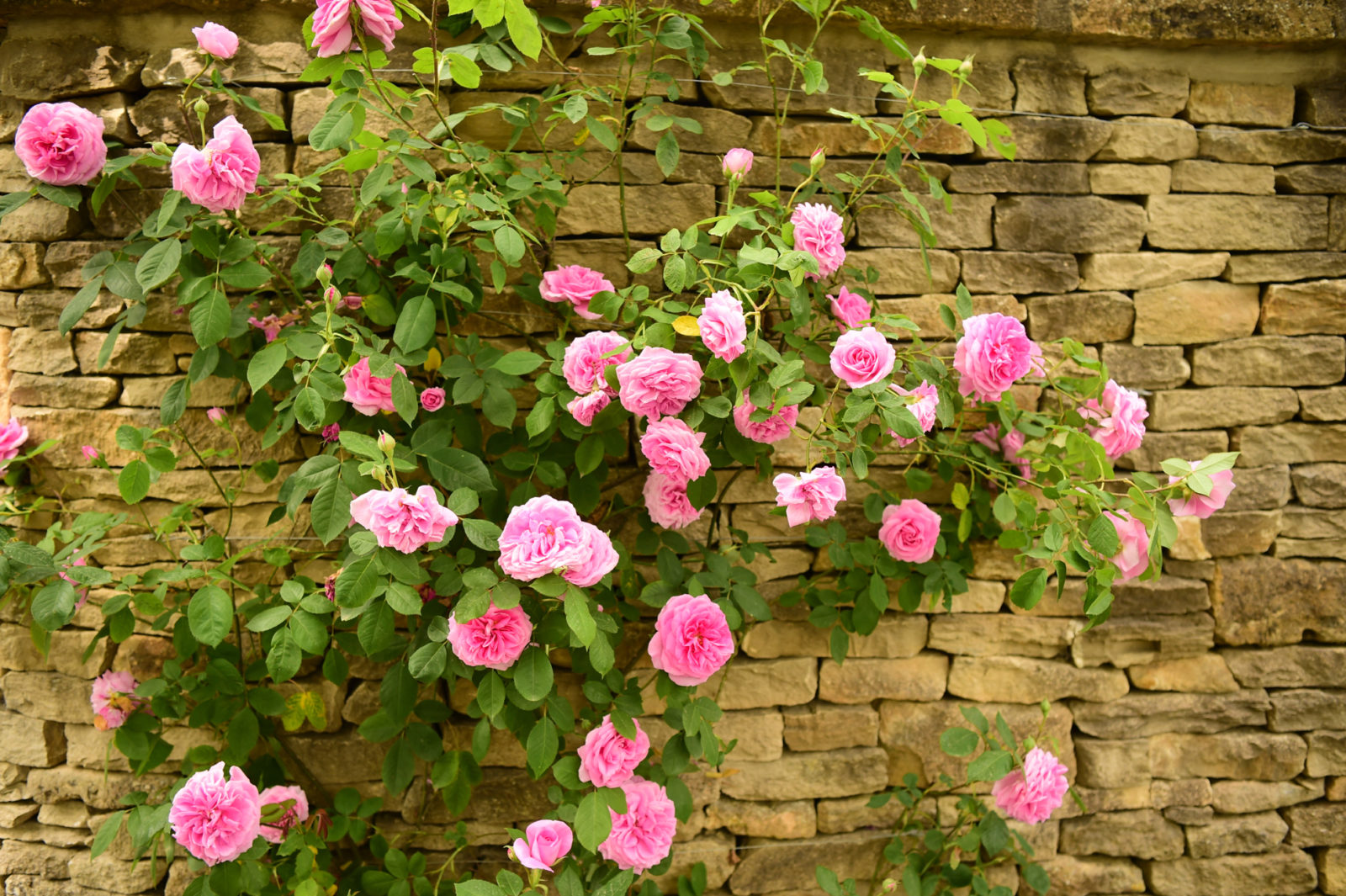
PERENNIALS > ROSES > PRUNING > CLIMBING
Reviewed By COLIN SKELLY

Colin is a Horticulturist and Horticultural Consultant with experience in a range of practical and managerial roles across heritage, commercial and public horticulture. He holds the Royal Horticultural Society’s Master of Horticulture award and has a particular interest in horticultural ecology and naturalistic planting for habitat and climate resilience.
Contributions From STEWART POCOCK

Stewart established Pocock’s Roses plant nursery in 1985 and has been running it ever since. Also the founder of The Cornish Rose Company, another specialist seller, he has been an exhibitor at many RHS Flower Shows, including Hampton Court and Chelsea.

Ben has been a professional gardener for over 20 years and is currently the nursery manager at Country Garden Roses. Country Garden Roses has been established for 35 years and is based at Black Birches in Shropshire, home to 500 different varieties of rose. The nursery has won several RHS medals, including Silver Gilt awards at the Shrewsbury Flower Show.

With over 45 years as a Co-Owner of Harkness Roses, Philip has made a name for himself in the rose industry. His plant nursery won gold medals at the Chelsea Flower Show in 2021 and have bred various new roses, including ‘The Duke of Edinburgh’ rose, which was handed to the Late HRH Queen Elizabeth II to commemorate what would have been her late husband’s 100th birthday.

A Partner at Style Roses, Chris has worked in garden rose production for over 40 years and is the former Production & Marketing Manager for the Horticultural Department of Lincolnshire Field Products. Chris opened up his specialist nursery Style Roses in 1999 operating from Lincolnshire, specialising in standard and bush garden roses sold bare-root - and currently offers over 400 varieties of garden roses for sale.
IN THIS GUIDE
ROSE GUIDES
Climbing Varieties For Shade
Common Problems
– Sawfly
– Black Spot
– Yellowing Leaves
Feeding
Growing In Containers
Pruning
– Pruning Climbing Roses
Taking Cuttings
Training
Red Varieties
Climbing roses are an ideal option for adding architectural intrigue and irresistible colour to a vertical surface – but they do require training and pruning.
This is to ensure that they maintain a healthy and aesthetically pleasing form, as well as continue to flower prolifically each year.
“Climbing and rambling roses need different treatment to normal roses,” Stewart from Pocock’s Roses explains.
While some people entertain notions that pruning is a difficult endeavour, it needn’t be.
In fact, as long as you stay on top of your pruning duties and follow the instructions laid out below, you should find that pruning your climbing rose plant is no more challenging than any other routine horticultural task.
Why Should You Prune Climbing Roses?
The main reason for pruning climbing roses is aesthetics.
These plants are not self-clinging and will require a support system to hold them up, such as a trellis or a network of horizontal twine or wire to which they can be affixed.
“Climbers, once established, which can take 2-3 years, need some of the oldest stems to be removed to promote new supple growth to tie into the shape you want,” says Ben Stirton, the nursery manager at Country Garden Roses.
But it’s not enough to just set and forget your climbing rose plant.
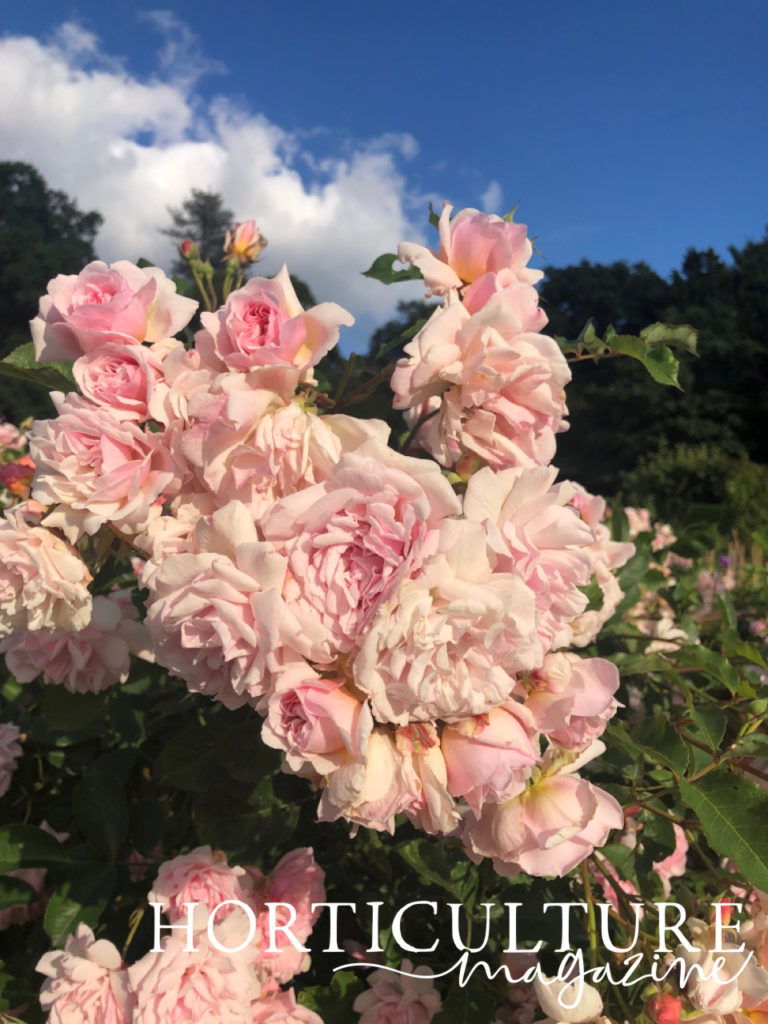
They also require regular maintenance to make sure their arrangement is neat and tidy and they’re as happy and healthy as can be.
By trimming back the side shoots of your plant once a year and reaffixing stems to the support structure behind it you will encourage the plant to grow in the direction you wish.
This makes for a more visually pleasing plant and allows you to ensure the vertical surface that the roses are climbing has good coverage.

Of course, the health of the plant is every bit as important as its image, and pruning helps to redirect resources away from dead or extraneous stems towards new growth.
For these reasons, it is advisable to deadhead roses regularly during the blooming season and prune back the side shoots once a year.
What Happens If You Don’t?
If you don’t prune back climbing roses because you’re too busy, physically incapable of doing so or simply forget, don’t worry.
It’s not the end of the world and probably not even the end of your plant, but it will almost certainly result in a less impressive display.
In aesthetic terms, it’s likely that your rose branches will become congested and jumbled, leading to weak stems and poor bloom yields.
With more energy being devoted to twiggy growth, the plant will have less in reserve for blossoms.
Given that roses are prized primarily for their pretty flowers, this can render their cultivation slightly pointless.

More concerningly, an overgrown climbing rose plant can see branches cross over one another and inhibit the flow of nutrients to their extremities.
This can prompt dieback in some areas of the plant and weaken its overall health, making it more vulnerable to fungal infections and diseases.
With that in mind, it’s just good practice to give your plant the best opportunity to thrive and produce consistently stunning displays by pruning it regularly.
When To Prune Climbing Roses
For starters, it’s important to remember that all new plants need time to establish themselves.
This means that you shouldn’t prune climbing roses for the first two or three years of their life, because doing so could jeopardise their long-term development.
Like most roses, established plants should be pruned in wintertime.
“Training and pruning climbers in late September to November is good,” says Philip Harkness, owner of Harkness Roses.

Indeed, the only type of rose which shouldn’t be pruned while dormant is the rambling rose, which unfortunately can resemble the climbing rose quite strongly.
To differentiate between the two, simply note their blooming times.
Rambling roses just produce a single tranche of blossoms, normally around June, while climbing roses will repeat flower all through the summer.
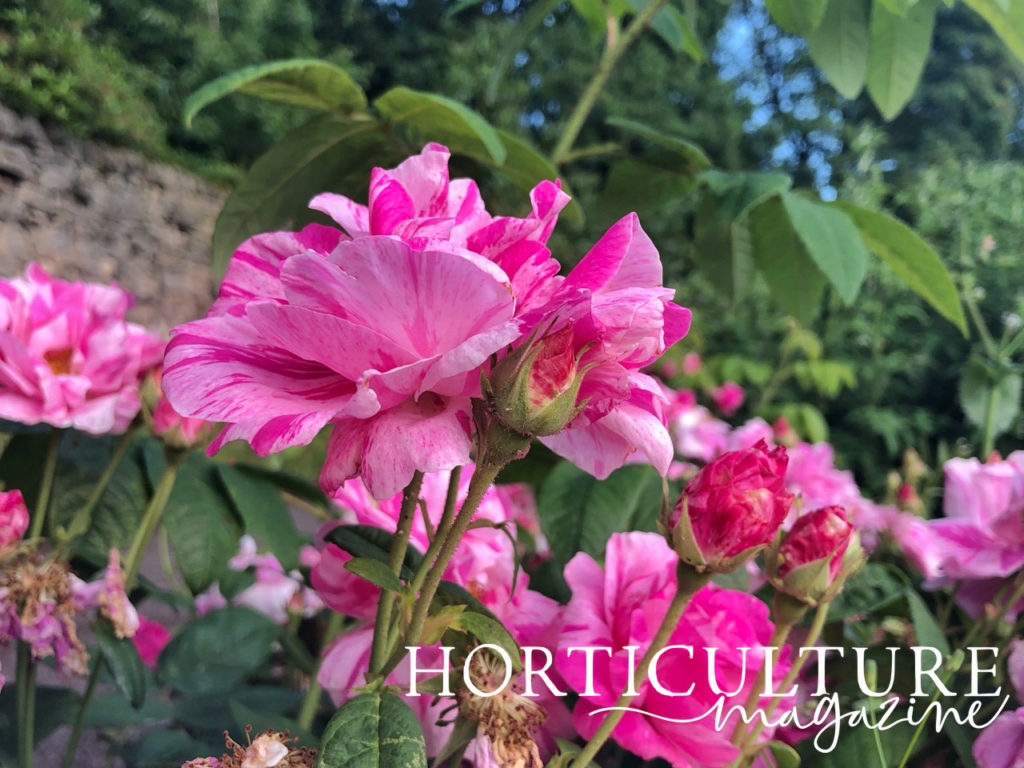
The reasons why you should prune climbing roses in winter are twofold:
- On the one hand, a plant which is not overcrowded with flowers and foliage will represent an easier and more accessible canvas upon which you can work.
- On the other, pruning while dormant facilitates the plant’s regeneration the following spring when it can divert resources to the parts which require them most.
Routine Pruning
As mentioned above, deadheading is essential to ensure you get the maximum yield during the blooming season.
You should keep a close eye on your plant and swoop in to remove old blooms after they have flowered to encourage new ones to replace them.
However, this alone is not sufficient to maintain a healthy and impressive-looking plant.
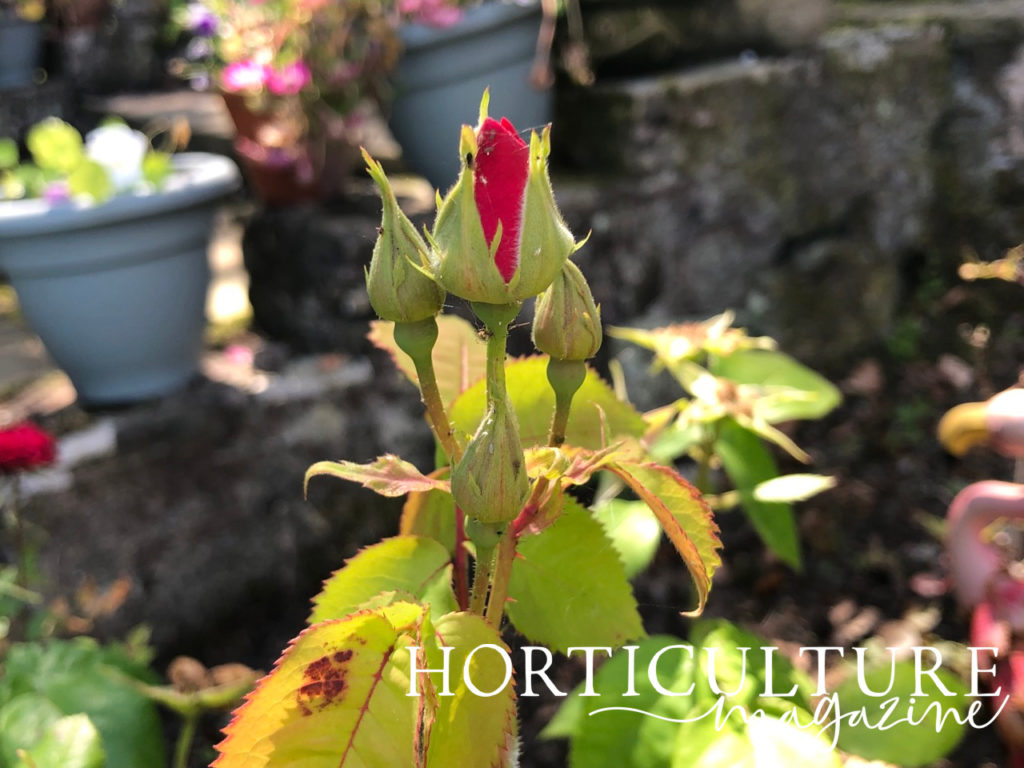
The following steps should be followed once per year, during late autumn or early winter once the plant is in hibernation for the colder months.
Remember to always wear thick protective gloves and goggles to keep your hands and face safe from the vicious thorns of the plant.
1) Cut Away Dead Branches
Identify any diseased, dying or dead branches and cut them off at the base.
This will ease the congestion of branches and prevent the plant from expending any resources on useless endeavours.
2) Find Weak Offshoots
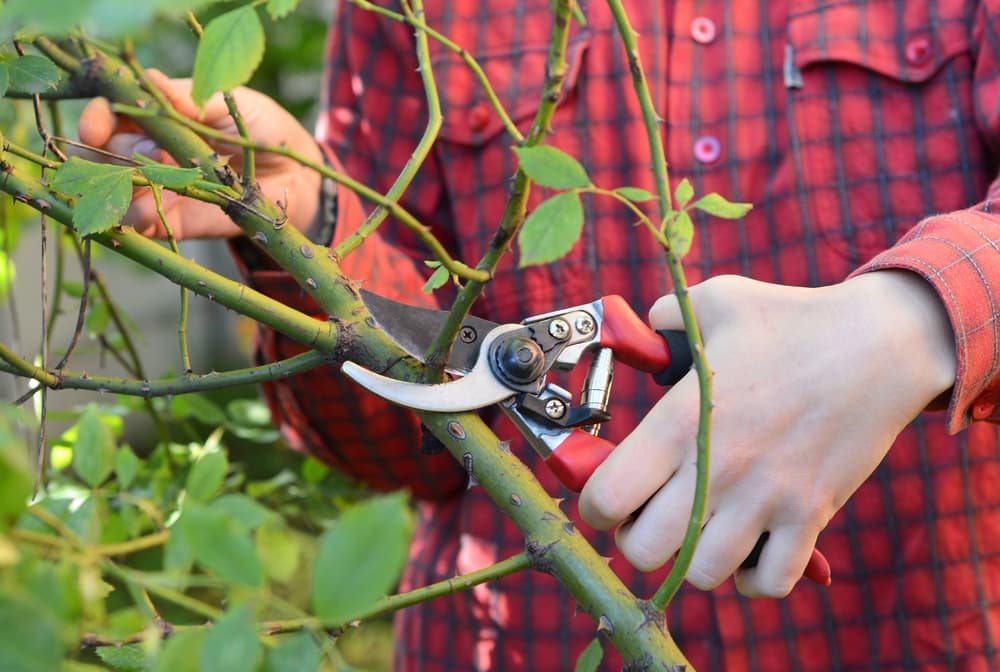
Look for weak offshoots which will be unable to support blooms and prune these back all the way to the main stem, as well.
Again, this is to conserve the plant’s energy and nutrients for the parts which will benefit most from them.
3) Prune To Improve Growth
Now it’s time to prune the plant to improve its growth going forwards.
You’ll want to leave the main, thick stems which sprout from the plant’s base alone altogether.
Instead, search out the side shoots which grow off from these stems, as Chris Styles from Style Roses shares:
“For climbers, leave the main, trained stems on the plant but cut back anything old & gnarly to the base every few years to trigger some new main shoots,” he says.
“Cut back side shoots coming off the main trained stems in winter to a couple of inches.”
When pruning a side stem, you should leave around 5cm remaining of the stem, which should contain 4-5 healthy buds.
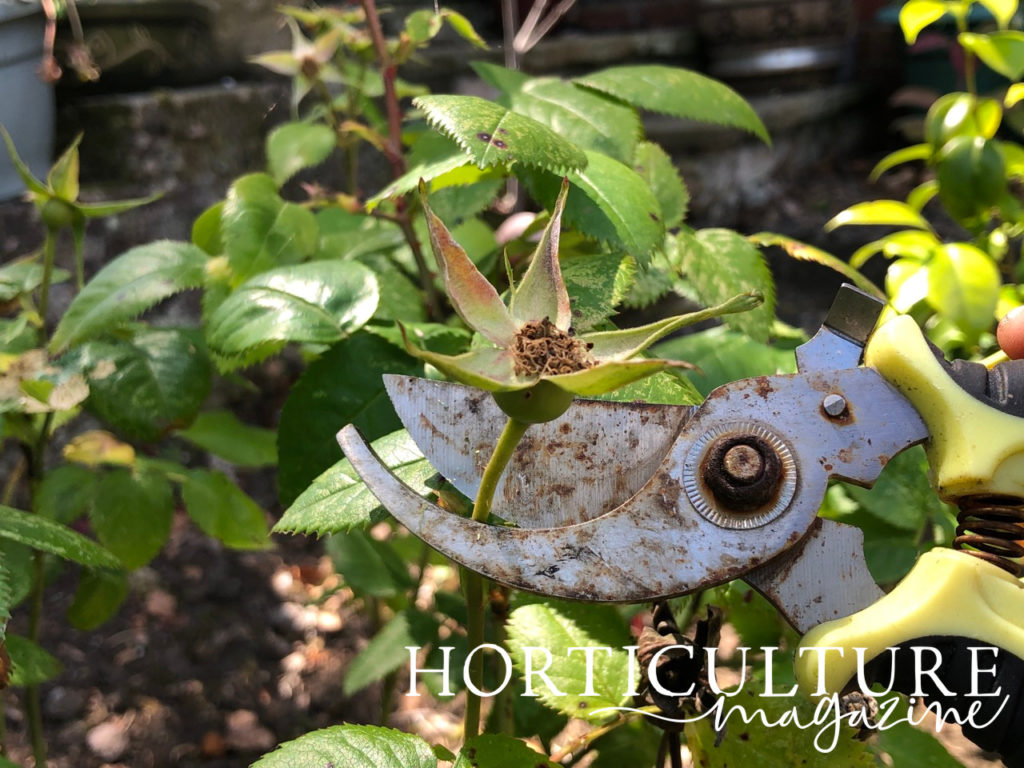
The incision should occur just above a bud which is pointing in the direction that you wish the plant to grow.
For example, avoid cutting above a bud which is facing the path, a bench or the end of the support structure, since this will only encourage growth in that direction.
4) Tie To Support Structure
After pruning, you will notice that the support system is bare in some places where you have removed dead, dying, diseased or weak stems and that there are new, strong stems which remain unattached.
You can solve both of these problems by tying the new stems to the newly vacant areas on your support structure.
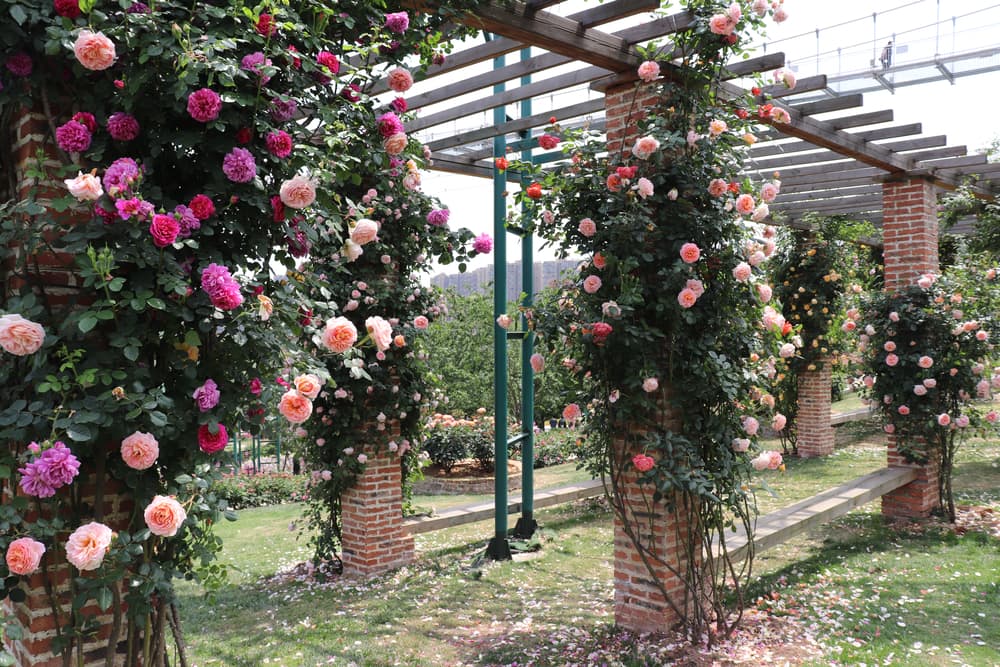
You can do this using twine or flexi ties.
In both cases, it’s advisable to wrap around the support structure first and the plant second, in order to avoid damaging the latter and improve the overall stability of the structure.
And voila! The pruning is complete and the plant will flourish once more when springtime rolls around.
Pruning Neglected & Overgrown Climbing Roses
If you are tending climbing roses which have been neglected and become overgrown as a result, a more vigorous approach is required.
You will essentially be following the aforementioned steps, but with a more ruthless remit.
Firstly, all dead and dying shoots must be removed as a matter of course.
You should then look to attack the main framework of stems more aggressively, cutting back some of the woodier branches right back to the base.
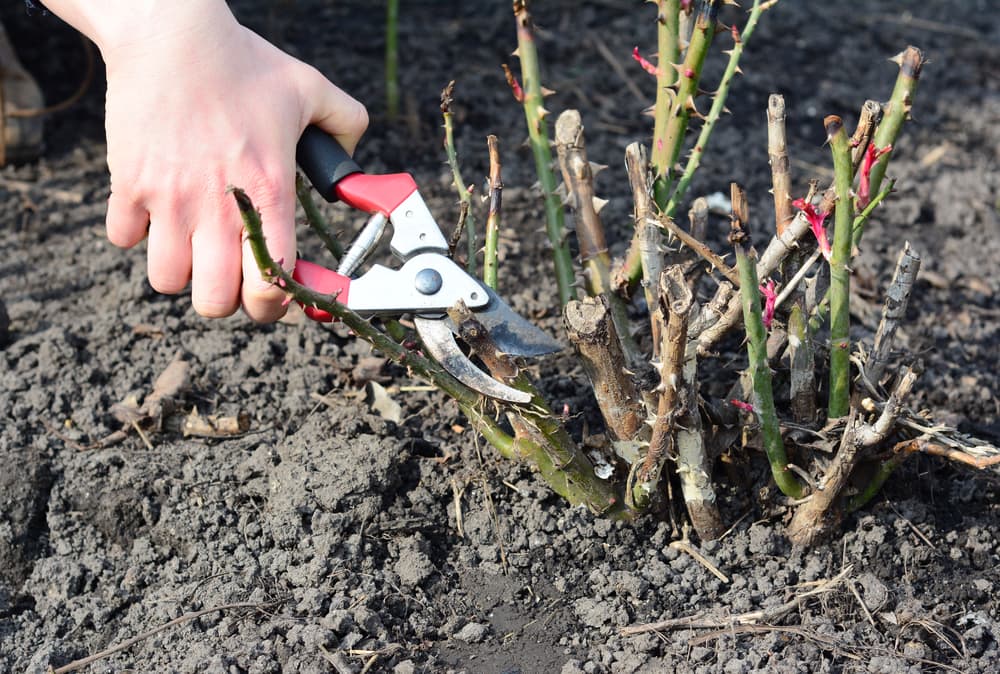
Leave around 6 healthy stems which can be affixed to the support structure.
Dead stumps at the base of the plant must be thoroughly sawed off to leave them flat.
Any hollows can collect rainwater, which increases the chances that your plant will suffer from rot.
You should also thin out the remaining branches by pruning back their own side shoots to within one-third of their original length.
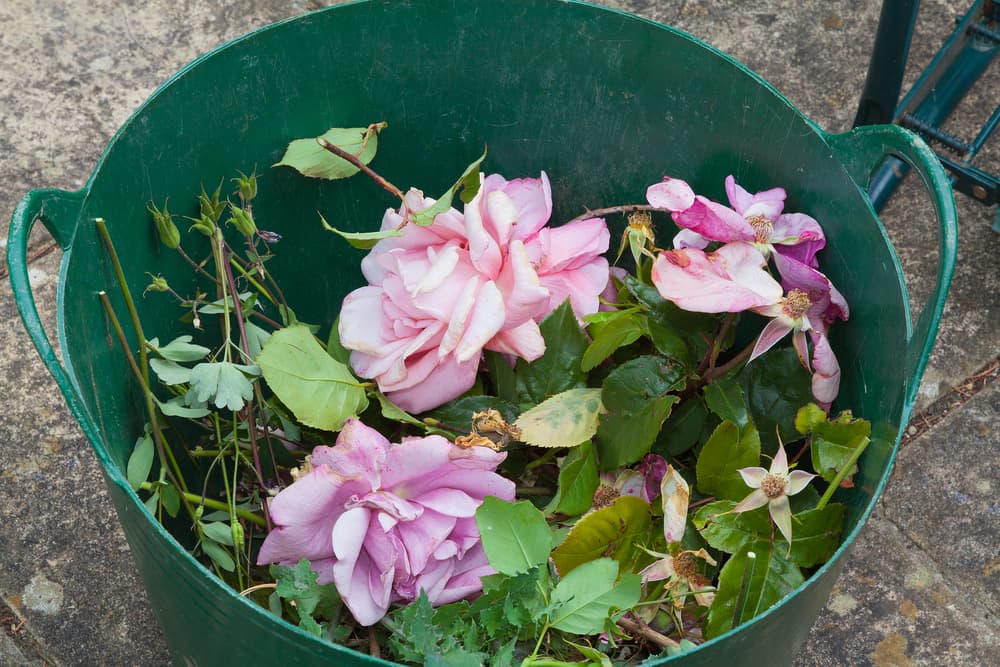
This will encourage branching and lead to a healthier and more shapely plant going forwards.
“O am often called upon to revive ailing climbing roses,” shares Master Horticulturist Colin Skelly.
“Often, this is the result of a lack of pruning, leading to a mass of tangled stems and a poorly flowering rose.
“Pruning out a third of the oldest stems and pruning back side stems to one-third of their length is a good rule of thumb. This will get you back to a starting point for ongoing annual pruning that will produce neat free flowering climbing roses.”
Aftercare
The above steps should be practised on an annual basis to ensure your plant remains in robust condition.
Deadheading, pruning and training will demand your attention for each year the plant is in your care.
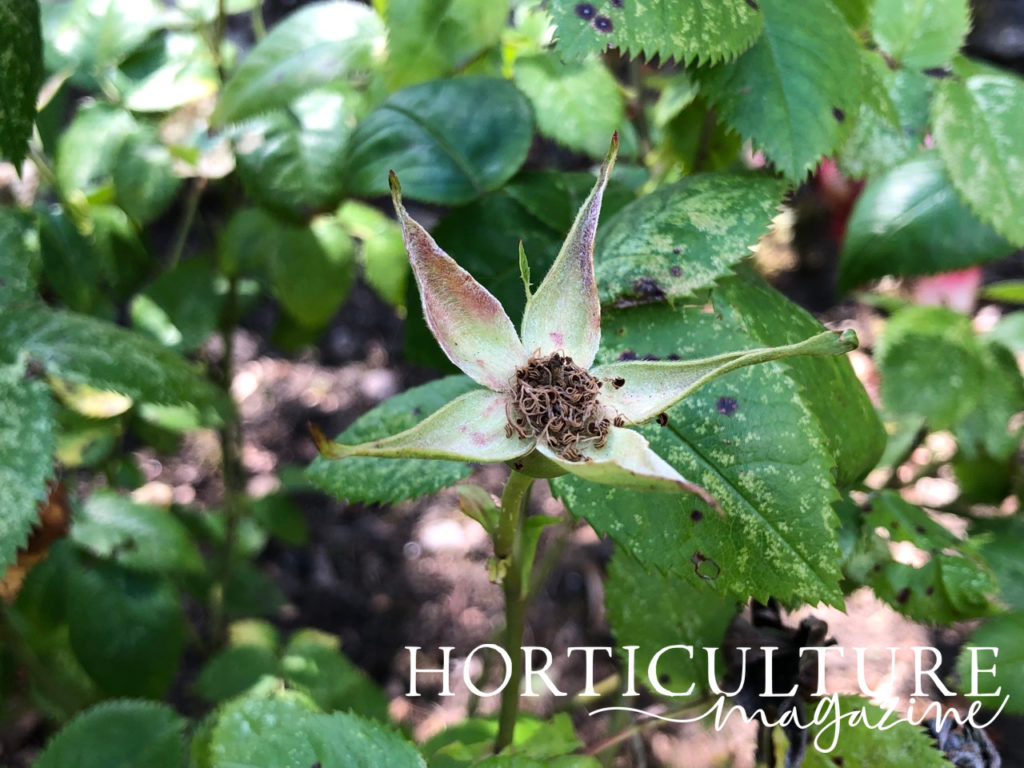
Additionally, you can give the plant a boost with artificial assistance.
Each spring, sprinkle granular rose fertiliser on the soil and cover it over with a 5cm layer of organic mulch.
This will ward off fungal infections and enhance the plant’s overall wellbeing.

